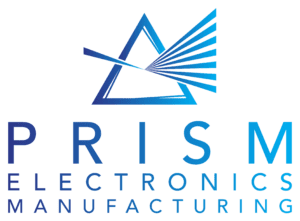Introduction
In the world of contract electronics manufacturing, efficiency, precision, and reliability are paramount. Manufacturers constantly strive to meet the demanding requirements of their customers, ensuring that the electronic products they produce are of the highest quality. One critical aspect of this process is soldering. While there has been a growing shift towards lead-free soldering in recent years due to environmental concerns, leaded solder still has its place in certain applications, particularly in industries where performance and reliability are paramount. In this blog post, we will explore the significance of leaded solder reflow machines in contract electronics manufacturing and why they continue to be relevant.
Understanding Leaded Solder
Leaded solder, often referred to as tin-lead solder, has been the standard in electronics manufacturing for many decades. It consists of a mixture of tin and lead, which provides several advantages in soldering applications:
- Lower Melting Point: Leaded solder has a lower melting point compared to lead-free alternatives, making it easier to work with during the soldering process. This lower melting point reduces the risk of thermal damage to sensitive electronic components.
- Enhanced Wetting: Leaded solder offers excellent wetting properties, ensuring proper adhesion between the solder and the components being soldered. This results in strong, reliable solder joints.
- Reduced Whisker Formation: Leaded solder is less prone to whisker formation, which can cause short circuits in electronic devices. This is a crucial consideration for high-reliability applications.
- Proven Reliability: Leaded solder has a long history of use in various industries and has demonstrated exceptional reliability, especially in applications where durability and performance are critical.
The Role of Reflow Soldering
Reflow soldering is a widely used process in contract electronics manufacturing for attaching surface-mount components to PCBs. It involves heating the solder paste, which consists of solder particles suspended in flux, to melt the solder and create a strong bond between the components and the PCB. The reflow soldering process is typically carried out using reflow ovens or reflow soldering machines.
The Significance of Leaded Solder Reflow Machines
Leaded solder reflow machines play a vital role in contract electronics manufacturing for several reasons:
- Compatibility: Leaded solder reflow machines are specifically designed to work with tin-lead solder alloys. They provide the precise temperature profiles required to melt and reflow leaded solder effectively.
- High-Reliability Applications: In industries such as aerospace, automotive, and medical devices, where reliability is paramount, leaded solder remains a preferred choice due to its proven track record. Leaded solder reflow machines ensure that these critical components are manufactured to the highest quality standards.
- Mixed Assembly: Some electronics assemblies require a combination of leaded and lead-free components. Leaded solder reflow machines offer the flexibility to handle mixed assemblies while maintaining soldering quality.
- Easier Process Control: Leaded solder’s lower melting point allows for more straightforward process control, reducing the likelihood of defects such as solder bridges or cold joints.
Conclusion
Leaded solder reflow machines continue to be indispensable tools in contract electronics manufacturing, especially for high-reliability applications. While the industry has witnessed a gradual shift towards lead-free soldering due to environmental concerns, the unique properties and reliability of leaded solder make it an irreplaceable choice in specific industries.
For further information about our manufacturing services please visit our website:
prism-electronics.com or call us on +44 (0) 1480 462 225.




